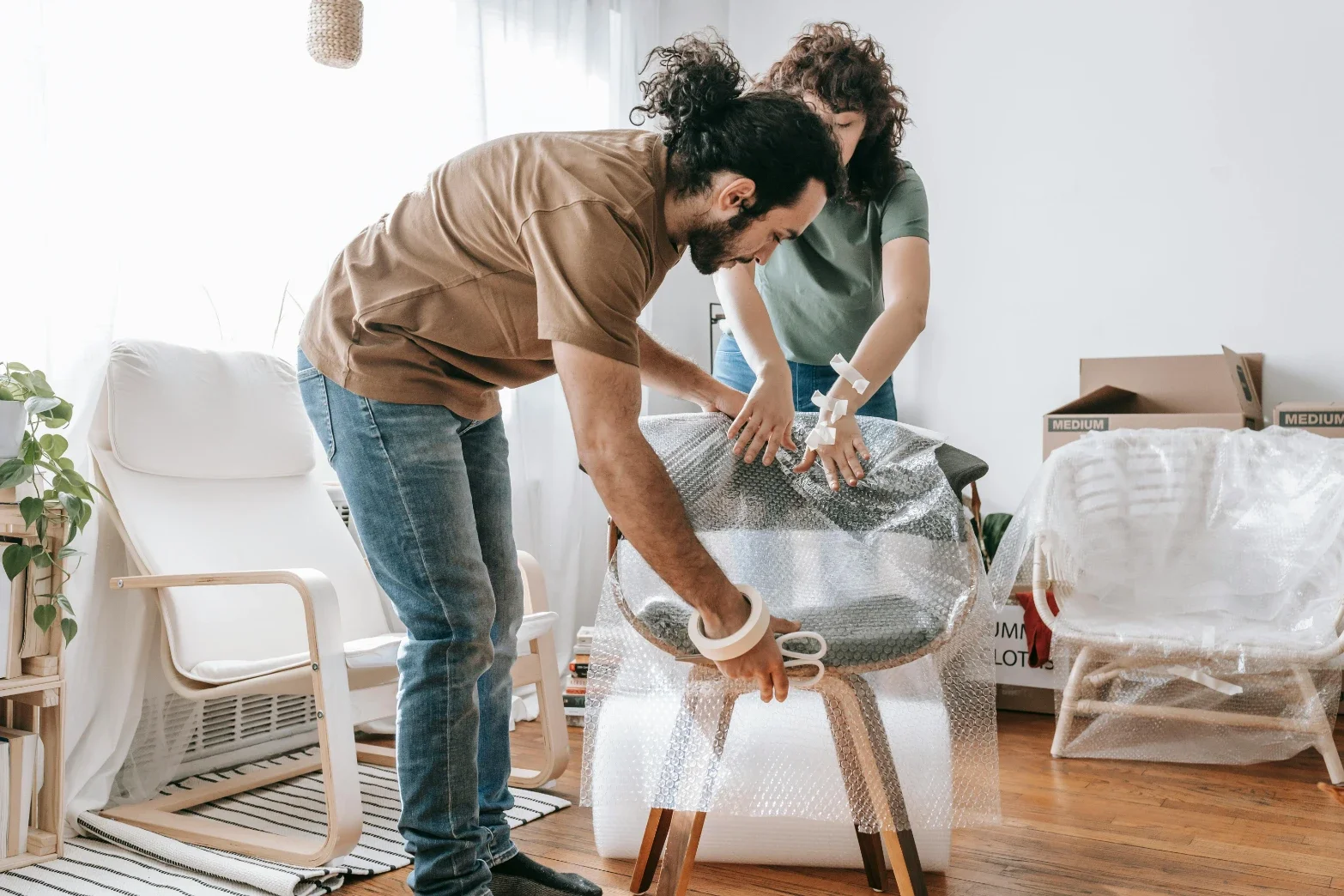Protecting Your Furniture During a Boston Move: Expert Tips
Keep your furniture safe during a Boston move with expert tips on packing, handling, and transportation to avoid damage and stress.
Moving can be an exciting new chapter, but it also comes with its fair share of challenges, especially when it involves packing and transporting your valuable furniture. Furniture pieces, from large sofas and heavy dining tables to delicate antique cabinets and complex bed frames, are often among the most expensive and sentimental items you own. Because of their size, weight, and sometimes fragile nature, they are also highly prone to damage during the moving process if not handled correctly. Scratches, dents, broken legs, or torn upholstery can turn the joy of a new home into frustration.
However, you can significantly lower the chance of damage to your priceless furniture by being well-prepared, using the right packing supplies, and using astute moving techniques. You can prevent future repair or replacement costs and ensure that your treasured furniture will arrive in your new Boston home in perfect condition, ready to bring comfort and familiarity to your new area, by properly protecting it. This post will walk you through professional advice and tried-and-true techniques to protect your furniture at every stage of your move, making sure it travels as smoothly and safely as possible.
Gather the Right Furniture Protection Supplies
The first and most critical step in protecting your furniture during a move is to collect all the necessary packing supplies before you even begin. Trying to make do with old blankets or thin plastic wrap will not offer enough protection against bumps, scrapes, and dirt. You will need strong, thick moving blankets or furniture pads, which are designed to absorb shocks and prevent scratches. Look for rolls of shrink wrap or stretch film, which are excellent for holding padding in place, protecting fabric surfaces from dirt, and securing drawers.
You'll also need sturdy packing tape and possibly some corrugated cardboard sheets for extra protection on flat surfaces or corners. For wooden furniture, consider furniture polish or oil for a pre-move clean and soft cloth. Tools for disassembling furniture are also vital, such as screwdrivers, Allen wrenches, and a small bag to keep screws and bolts organized. You'll save time and be able to protect each piece of furniture as needed if you have all these things on hand. Don't underestimate the importance of quality supplies; they are your furniture's first line of defense during the move.
Clean and Disassemble Furniture Properly
Before you wrap or move any piece of furniture, it's a good idea to give it a thorough cleaning. Dust and dirt can scratch surfaces during transit, especially if caught under protective wraps. Use appropriate cleaners for wood, metal, or fabric to ensure your furniture is clean and dry. Disassembling any furniture that can be disassembled is an essential next step after cleaning. Bed frames, dining tables, chairs, and frequently bookshelves or entertainment centers are included in this. Disassembling these items reduces their overall bulk, eases carrying, and—above all—significantly reduces the chance of damage. Smaller pieces are less likely to catch on stairwells or doorways.
Carefully gather all screws, bolts, nuts, and washers as you disassemble furniture. Put these tiny components in plastic bags with clear labels, then tape them firmly to the matching piece of furniture or to a bigger "parts" bag that you carry with you. For later reassembly, taking pictures of the furniture both before and during disassembly can be very beneficial. This step not only protects the furniture itself but also makes the moving process much safer and more efficient for anyone lifting and carrying these items.
Wrap Furniture for Maximum Protection
Once your furniture is clean and disassembled (if possible), the next vital step is to wrap it correctly for maximum protection. Use thick moving blankets or specialized furniture pads to cover all surfaces of your larger items, like dressers, tables, and cabinets. These pads act as a cushion against impacts and scratches. Secure the moving blankets firmly in place with multiple layers of shrink wrap or stretch film. This plastic wrap not only keeps the padding from shifting but also adds another layer of protection against dirt, moisture, and scuffs. For fabric-covered items like sofas, armchairs, and mattresses, an additional layer of mattress bags or sofa covers made from thick plastic is highly recommended. These covers shield upholstery from dirt, dust, and potential tears during handling and transport. Pay special attention to corners and edges, as these are often the first parts to get chipped or dented. For extremely valuable or delicate wooden furniture, consider adding an extra layer of cardboard on top of the blankets, secured with more shrink wrap. Proper wrapping is not just about covering; it's about creating a secure, padded barrier that can withstand the movements and bumps of a busy, moving day.
Protect Edges and Corners with Care
Edges and corners are the most vulnerable parts of your furniture during a move. They are easily chipped, dented, or scratched if not given extra attention. Even with general wrapping, these areas need added reinforcement. For wooden tables, dressers, cabinets, and desks, consider using specialized corner protectors made from plastic or thick cardboard. If you don't have these, you can create your own by cutting pieces of extra corrugated cardboard and folding them over the corners, securing them tightly with packing tape or more shrink wrap.
For items with sharp corners, foam padding can also be very effective. To ensure that the additional protection remains in place, wrap the entire piece in shrink wrap and move blankets after applying corner protection. The goal is to create a soft, shock-absorbing barrier around these high-risk areas. This extra step, though small, can prevent significant damage and preserve the appearance of your furniture. It's a quick way to avoid unsightly marks that would otherwise require costly repairs or refinishing. Paying close attention to these delicate areas ensures a much safer journey for your valuable pieces.
Secure Drawers and Moving Parts
Furniture pieces with drawers, doors, or other moving parts require special attention to prevent damage and ensure safety during the move. Never try to force a dresser or cabinet with loose drawers inside, as they can slide open, fall out, break, or even cause injury. For items with drawers, the best approach is to empty them completely and then remove the drawers if possible. Pack the contents of the drawers in separate, labeled boxes. If drawers cannot be removed, secure them tightly using multiple wraps of stretch film around the entire furniture piece. Avoid using packing tape directly on finished wood surfaces, as it can strip off the finish. For cabinet doors, glass inserts, or any other movable parts, use painter's tape or stretch film to keep them firmly closed during transport.
Again, ensure no tape touches the finished surface directly. Remove any glass shelves or inserts, wrap each one separately in bubble wrap, and then package them in boxes with clear labels. By taking these precautions, you can avoid doors and drawers flying open while in transit, which could harm other items, the furniture, or even the movers. A successful, damage-free move is facilitated by the small but crucial detail of the moving parts being carefully prepared.
Plan Your Furniture Layout in the New Home
Before your furniture even leaves your old home, it's incredibly helpful to have a clear plan for its placement in your new house or apartment. This foresight helps to avoid confusion and wasted time on moving days, and it makes the unloading process much more efficient. Measure doorways, hallways, and stairwells in your new Boston home to ensure all your furniture will fit. Create a simple floor plan, perhaps drawing it on paper or using an online tool, showing where each major piece of furniture will go in each room.
Label rooms clearly in your new space. Share this plan with your Movers In Boston when they arrive. Knowing exactly where each sofa, bed, and dresser needs to be placed saves the movers time and effort, as they won't have to move items multiple times. It also reduces the chances of furniture getting bumped or scraped while being shifted around. This thoughtful planning ensures that your valuable pieces go directly to their final spot, avoiding unnecessary handling and promoting a smoother, faster setup of your new living space. A good plan makes moving day much less stressful for everyone involved.
Professional Handling and Loading Techniques
Even if you meticulously pack and protect your furniture, its safety ultimately depends on how it's handled and loaded onto the moving truck. Professional movers have specialized training and equipment for lifting, carrying, and stacking heavy and oddly shaped furniture. They use dollies, hand trucks, and furniture straps to move items safely through tight spaces and up or down stairs, reducing the risk of injury or damage. When loading the car, they apply expert stacking techniques. Heavier, more durable items are placed at the bottom and front of the truck, while lighter, more fragile items are placed on top or at the back.
They strategically use moving blankets and padding between items to prevent shifting and rubbing during transit. Securing furniture firmly to the truck's walls with straps also prevents movement on the road. Attempting to lift and load heavy furniture without proper technique can lead to serious injury or damage to your belongings or home. Relying on Boston Local Movers ensures that your furniture is moved safely from your old home to your new one. Their experience in careful loading and unloading is crucial for a damage-free relocation.
Unpacking and Inspecting furniture
Once your furniture arrives at your new Boston home, the work isn't quite over. As each piece is brought in, it's important to do a quick visual inspection before your movers leave. Check for any obvious signs of damage that might have occurred during transit, such as new scratches, dents, or tears. If you notice any damage, point it out to the moving crew immediately and document it with photos. This quick review is a standard practice for reliable Movers In Boston. It is critical for any potential insurance claims later on. Once the movers have placed the furniture in its designated spot according to your plan, carefully remove all the protective wrapping, blankets, and tape. Take your time with this to avoid accidentally damaging the furniture as you unwrap it. Reassemble any furniture that was taken apart using the labeled bags of hardware you prepared. To make sure moving parts, doors, and drawers are operating properly, test them. A thorough inspection at this stage ensures that any issues are noted promptly and allows you to confirm that your furniture has made it safely through the entire moving process, ready for you to enjoy in your new space. Reliable Movers In Boston will always support you through this final step.
Consider Climate and Storage Needs
When planning your move, especially in a city like Boston with varying climates, it's important to consider how temperature and humidity might affect your furniture, particularly if there's any time your furniture might be in storage. Severe temperature fluctuations or extended exposure to moisture can rust metal parts create mold on upholstered furniture, and warp wooden furniture. Make sure the storage facility is climate-controlled to protect delicate items if your move involves storage. For the transit itself, reputable Affordable Movers Boston will ensure their trucks are enclosed and provide adequate protection from the elements. If you have fine art, antiques, or very delicate pieces, discuss specific climate needs with your movers.
Additionally, pick a clean, safe, and well-ventilated storage unit if you need to temporarily store items. Proper preparation for storage, including additional wrapping or covers, can prevent long-term damage. Thinking about the environmental factors helps you choose the right moving and storage solutions to keep your furniture in top condition, regardless of how long it takes to settle into your new home.
Final Thoughts
Protecting your furniture during a move is a critical step that demands careful planning and execution. As this guide has outlined, from gathering the right supplies and meticulously preparing each piece to correctly wrapping, securing, and planning its placement, every detail contributes to a successful, damage-free relocation. Properly cleaning, disassembling, and reassembling furniture not only makes the move easier but also significantly reduces the risk of harm to your valuable possessions. Recognizing the importance of strong packing materials, expert handling, and careful loading techniques are all vital aspects. Taking the time for a thorough inspection upon arrival also ensures peace of mind. Ultimately, safeguarding your furniture properly not only saves you from potential repair or replacement costs but also ensures that your beloved pieces arrive at your new Boston home in perfect condition, ready to help you settle in and make your new space truly feel like home.
Selecting seasoned Movers in Boston, MA is a smart move when you're ready to move and want to make sure your furniture gets the best treatment possible. Understanding the worth and significance of your furniture, Stairhopper Movers specializes in offering cautious and effective moving services. Their knowledgeable staff ensures a seamless and worry-free transition by protecting your belongings throughout the process using superior materials and professional techniques. You can be sure that your priceless furniture will be handled expertly and delivered securely to your new Boston address when you work with Stairhopper Movers.






























